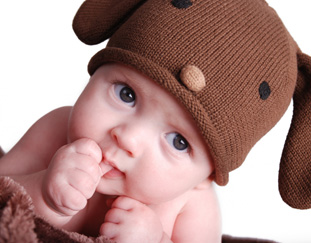
10 Secrets You Didn't Know About Pacifier and Thumb Sucking Habits
Secret #1:
Do you know that sucking is a life skill your child began in the womb? When just a tiny infant, the child continued sucking. Sucking, whether the baby sucks on a thumb or pacifier, is natural. A baby can become a thumb or pacifier sucker during the first few months. Sucking becomes a way for the baby to calm down. It also becomes a way to help the baby to fall asleep. It can be a way for the baby to just feel good.
Secret #2:
Why does a baby need to suck? Sucking helps a baby meet new challenges. Sucking helps the baby to sleep through the night. Sucking helps a baby to eat with the family. Sucking helps a baby to feel comfortable on a long car ride. Sucking simply helps the baby to cope.
Secret #3:
Thumb sucking, finger sucking or pacifier sucking is common during those first few months. It is thought to be harmless by pediatric dentists. Sucking on a thumb or pacifier will not hold back your toddler’s development. It will not make it harder for a toddler between the ages of one to three to talk or play. A toddler in the age range of two to four will begin to develop other coping skills according to pediatric dentist, Mary Hayes. You should only be concerned after the age of four if your child is still dependent on sucking.
Secret #4:
Will sucking a pacifier or thumb hurt your child’s teeth? Sucking can alter the shape of the mouth, especially around the time that the permanent teeth start coming in (around age 6). The stronger/longer/more often the child sucks; the more the shape of the child’s mouth can be altered.
Secret #5:
Sucking puts pressure on the sides and roof of the mouth. This keeps the teeth from meeting top to bottom. Later, the child will likely need braces to correct this. And in some cases, it can sadly cause speech problems such as a lisp. The lisp will then need to be corrected with speech therapy.
Secret #6:
Thumb or finger sucking can cause a “thumb hole” to develop in the roof of the child’s mouth. This makes the teeth in the back of the mouth do most of the chewing. This causes the teeth to be off balance. This affects the mouth and jaw as the child grows.
Secret #7:
What should you do about this? You certainly should lessen the child’s dependence on thumb or finger sucking. Try to do this before the child’s thumb or finger sucking coping skills become a conscious habit.
Secret #8:
What should you not do? You definitely should not pull the child’s thumb out of his mouth. Consider using a different strategy. Growing up causes a lot of anxiety for a child. The child finds thumb or pacifier sucking a soothing activity. It reduces the child’s anxiety.
Secret #9:
There are other ways you can help your child to stop sucking his or her thumb or pacifier.
• Do try to limit the time your child sucks his or her thumb to nap or night bedtime.
• Don’t criticize your child for sucking his or her thumb. Do praise him or her when not sucking his or her thumb.
• Don’t forbid your child to suck his or her thumb when he or she is hurt. Your child needs to be comforted.
• Do make your child aware that he is sucking his thumb or pacifier. Help your child find another way to cope such as a favorite blanket or stuffed animal.
• Do use creative ways to make your child understand that he is growing up. Explain that growing up means you won’t suck your thumb anymore someday. You could always ask your child, “Do you think Bob the Builder sucks his thumb?”
• Do be patient. Most children stop sucking their thumb or pacifier on their own by age 5.
Secret #10:
Although you can take away a pacifier whenever you choose, alas, there is no silver bullet to eliminate a thumb sucking habit. It just takes time.